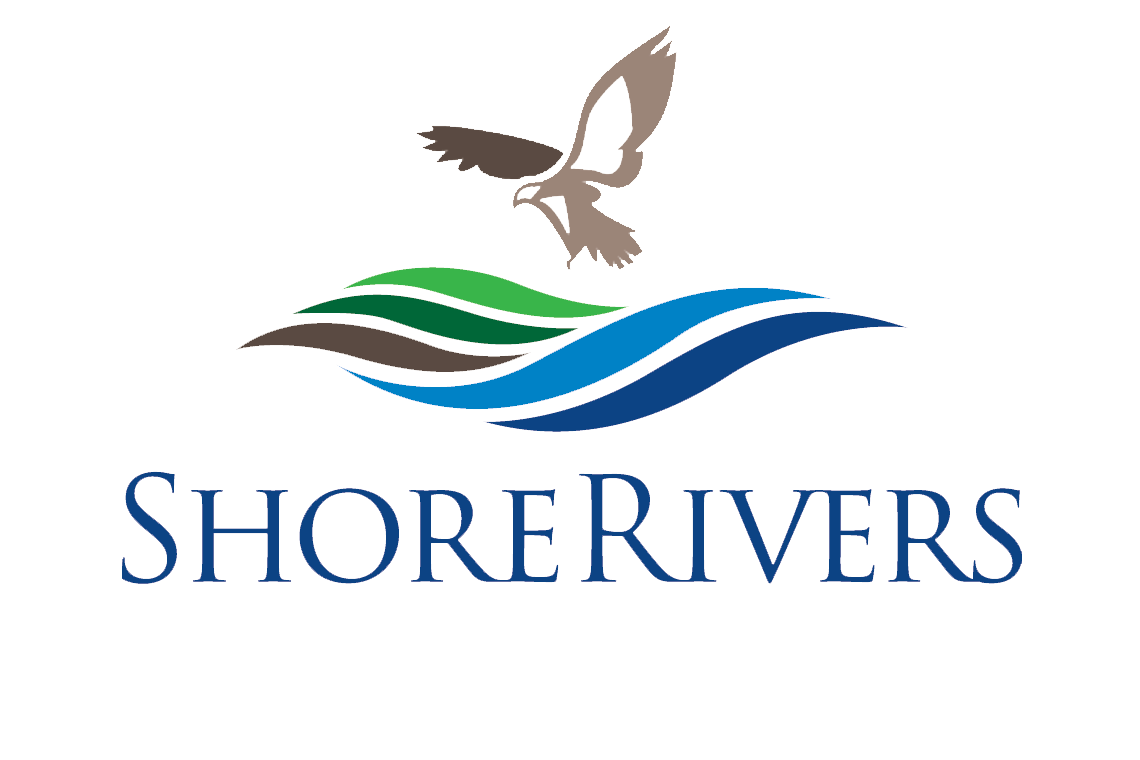ShoreRivers' History
ShoreRivers is a nonprofit organization working to improve the health of Eastern Shore waterways through science-based advocacy, restoration, and education. ShoreRivers was created in 2017 when the Chester River Association (CRA), Midshore Riverkeeper Conservancy (MRC), and Sassafras River Association (SRA) merged.
WHY did the three groups merge together?
All three legacy organizations have a deep history of working collaboratively to improve the health of the waters in their Eastern Shore communities. By merging together, we become more than just the sum of our parts – we are now one committed voice with more influence on policy, more capacity to enact programs, and more potential to undertake large restoration projects to reduce pollution. We will maintain our local focus on our Eastern Shore rivers with our four WATERKEEPERs while having a much stronger, collective voice for our cause.
WHAT happened to the three legacy organizations?
The three legacy organizations have merged into ShoreRivers. Our passion and commitment to local waterways remains, and our leadership, staff, and Board of Directors are composed of members of the legacy organizations. We deeply value our history and will build on the strengths and accomplishments of the legacy organizations as the leading voice for healthy waterways on the Eastern Shore.
The History of our Legacy Organizations
Chester River Association
Founded in 1986 by concerned citizens, the Chester River Association (CRA) was formed to raise awareness and find solutions concerning the poor water quality on the Chester River. Chester Tester volunteer scientists have been an integral part of its efforts to protect and restore the Chester for decades. For almost 20 years, CRA existed as a purely volunteer enterprise. In 2002, CRA hired a full-time Riverkeeper and since that time has continuously added staff and programs. From early on, CRA recognized that due to the unique heritage and geography of the Chester River, it serves as a nexus for productive land and water. As such, CRA has worked to bring the agricultural and environmental communities together to develop and implement innovative solutions that promote healthy farms and healthy rivers.
Midshore Riverkeeper Conservancy
Midshore Riverkeeper Conservancy (MRC) was founded in 2008 by Tim Junkin who served as its first executive director. It was originally called Choptank River Eastern Bay Conservancy (CREB) but was rebranded to MRC in 2011.
Dedicated to the restoration and protection of the Choptank, Miles, and Wye Rivers, and Eastern Bay, the organization hired a Choptank Riverkeeper in 2009 and a Miles-Wye Riverkeeper in 2010, expanding in the process, adding educators, a scientist and a director of operations. Volunteer organizations such as Talbot Creekwatchers and Friends of the Wye provided membership ballast. In 2014, Jeff Horstman came on as the Miles-Wye Riverkeeper and deputy director.
When Jeff became director in 2016, MRC comprised ten professional employees, was buttressed by a board of directors of fourteen community leaders, and enjoyed the support of several thousand members and volunteers. In 2017, Jeff, with the aid of key funders and leaders from all three of the merging organizations, helped drive the process that led to the formation of ShoreRivers.
Sassafras River Association
The Sassafras River Association (SRA) began in 2004 with a small group of citizens who were concerned about the degradation of their beautiful river. Under the leadership of two resident scientists, a rigorous water sampling and testing program was initiated and became the foundation by which SRA prioritized its activities. Its mission was to promote clean water, a balance among recreation, wildlife and economic activity, and an educated community that takes action to protect and restore the health of the watershed.
By 2010 a blueprint for positive improvement to the health of the river and watershed was developed, endorsed by 15 government, university, foundation, and environmental representatives, and approved by the EPA. Known as the Sassafras Watershed Action Plan (SWAP), it outlined 30 restoration strategies, cost estimates, implementation timelines, and funding opportunities designed to have a clear and demonstrable effect on improving the water quality in the Sassafras River. The Sassafras River Association quickly became known for its science-based selection of innovative projects, the size of projects undertaken, and the pollutant reductions achieved.



